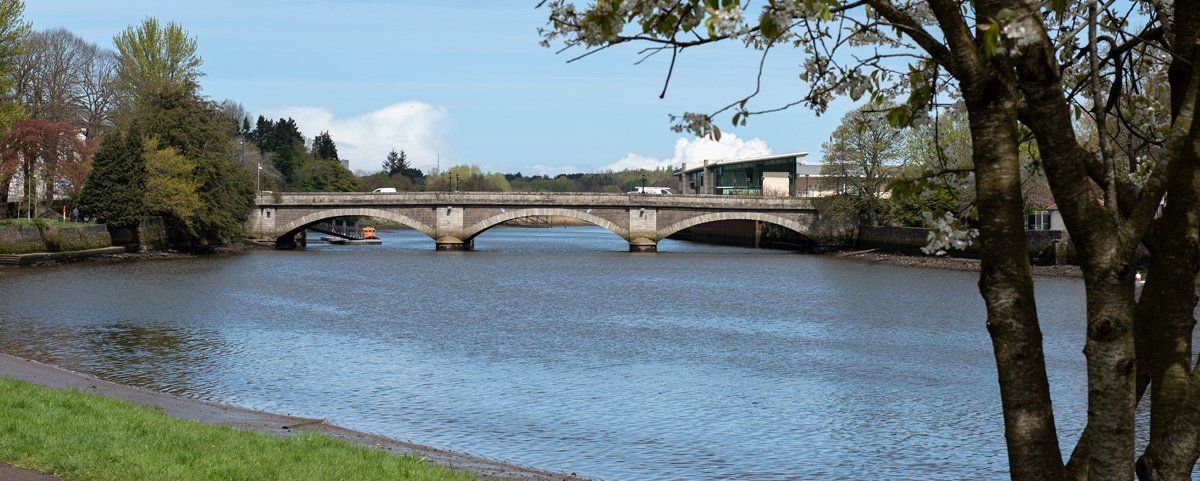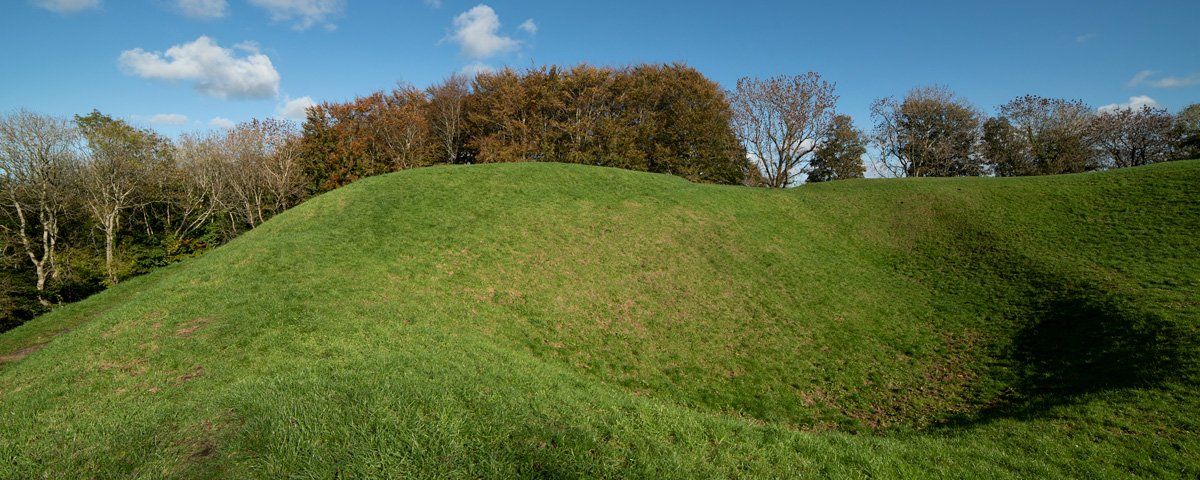In front of the Town Hall stands a memorial to those lost during the two great wars, a bronze figure of a soldier in full battle dress stands resting his hand on the barrel of a rifle while below a beautiful bronze sculpture of the daughter of Erin wearing a long hooded cloak, reaches a wreath upwards towards the soldier, a fabulous work of classical art. On the far side of the hall, you'll find another bronze sculpture of Bertie Peacock, a famous local footballer, created by the artist Ross Wilson. On Kingsgate Street opposite the church, you will see a plaque to the Artist and Illustrator Hugh Thompson, his illustration appeared in many publications including gracing the pages of books by Jane Austen, Charles Dickens and J. M. Barrie.
A short walk from the town hall is St. Patrick' Church which was completed in 1885 and design by Thomas Drew, it stands on one of the oldest ecclesiastical sites in Ireland. St Patrick founded one of the first churches here in 456 AD, the grandson of the chieftain who gave him the original piece of land became the first Bishop of Coleraine. The church grounds are an oasis of peace and tranquillity in the centre of this pleasant and busy rural town and the architecture is superb. Behind the church and forming part of Anderson Park are the last visible remains of earthen ramparts which once surrounded this fortified town on four sides, the river forming one side.
One of the objectives was to build two new towns, Coleraine and Londonderry. You will find other villages which were founded during the plantation including Articlave and Eglinton. Coleraine was chosen because it had a substantial Abbey, it was defensible and surrounded by fertile land and the river could be navigated. St. Mary's Abbey was abandoned by the Dominicans in 1556, it was acquired by Thomas Phillips for his residence during the building of Coleraine between 1605 and 1610, the abbey then became an educational facility given the status of a university by the Dominicans in 1644. The first bridge across the Bann was constructed out of local timber by the Anglo-Normans around 1250, they also built at the same time, Drumtarsey Castle which they garrisoned.
The castle was close to where the present-day Clothworker's Building is, this building and the wonderful bridge with its shallow elliptical arches were designed by the architect John Lynn. The bridge was constructed by George Maxwell out of dressed Scottish granite and completed in 1859. Up to this time and continuing afterwards was a ferry service across the river from Ferry Quay (Ferryquay Street) to the 'Wee Brae' at Killowen. The river once divided two counties and the town straddled both, this aided its development as a major source of commerce and administration from the plantation onwards. The town prospered from the involvement of the Honourable Irish Society and the plantation which is reflected in the quality of the buildings, administration and educational establishments.








